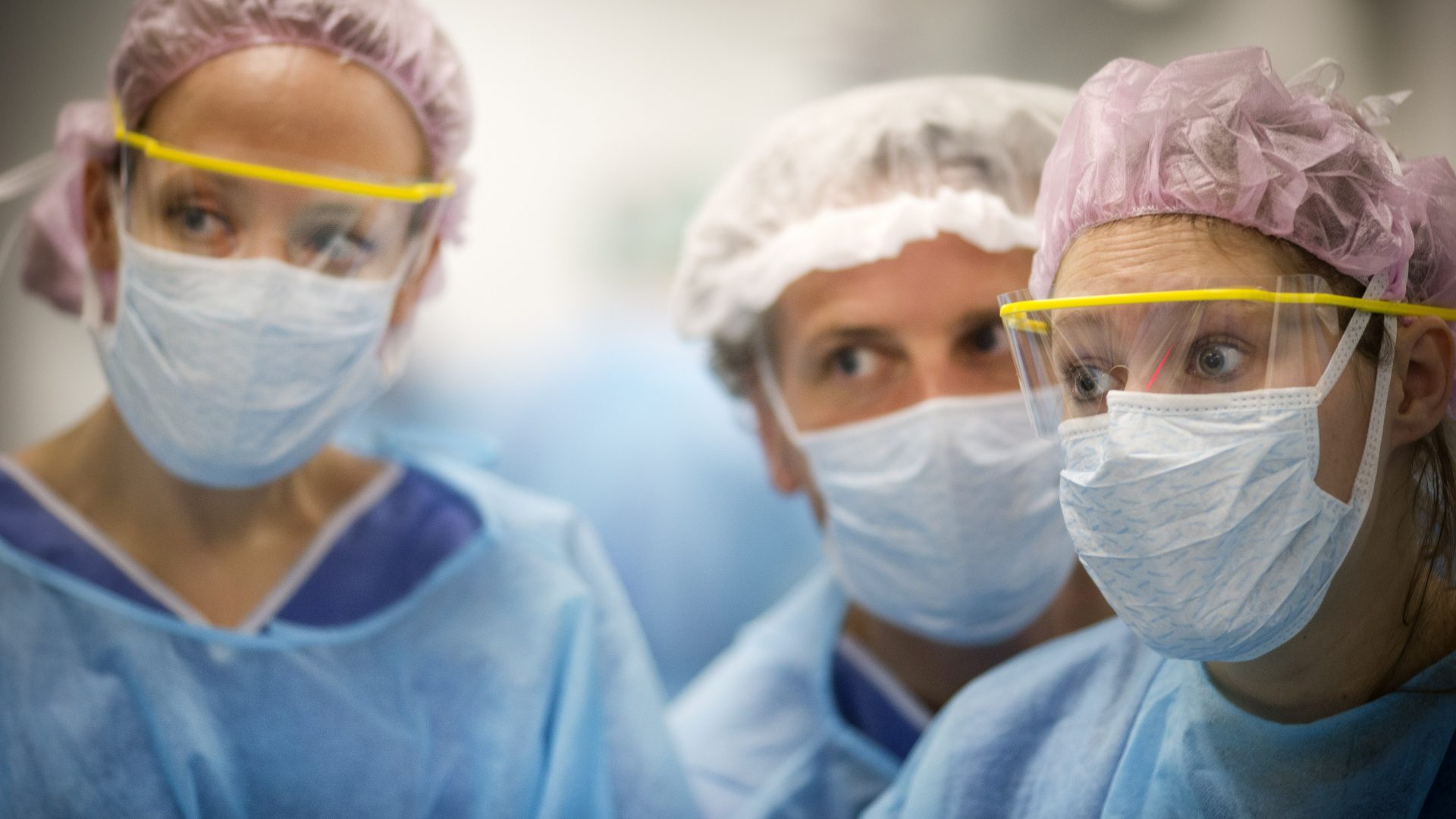
Madelon Panman
The SkillsLab is intended for three groups. First of all doctors who are in training for a surgical specialism. They train basic skills there, like the suturing of blood vessels. Secondly doctors from Erasmus MC who excel at a certain element of their field and give a workshop. Finally medical companies who run courses for their (potential) clients, such as doctors and nurses.

Prof. dr. Gert-Jan Kleinrensink
Deftness and anatomy
Professor of Anatomy Gert-Jan Kleinrensink relates: “Deftness and anatomy are the pillars of surgery. Both elements are present in the SkillsLab, physically and organizationally. The anatomical dissecting room and the rooms where doctors can train their skills, are directly linked here.” Manager Madelon Panman: “But it’s not just about technical skills. You also learn to work together here. For instance, how do you ensure a safe environment where people feel safe enough to bring up issues with each other? An operation assistant has to dare ask a surgeon a question, without being hindered by status.” The SkillsLab continues to develop more options for team trainings. Panman: “Surgeon, anesthetist and assistants practice together. The added value? Knowledge and insights are more easily shared and it leads to a better collaboration in the clinic.”

Realistic training
“Compare it to puppet theatre. There you also know that it’s not real, but everyone calls out: ‘Look out, behind you!’ Even though it’s only a puppet, you go along with the game.” Professor Robert Jan Stolker, Department Head of Anesthesiology at Erasmus MC, talks about a high tech simulator. That’s an artificial patient with which anesthetists can practice situations endlessly without harming the patient. Stolker: “We started working with this type of simulator in 2008. They enable us to train an unlimited number of scenarios. A number of technical moves can be trained, such as the inserting of ventilation tubes. And you can mimic situations that are lifethreatening.”
More self-confidence
Anesthetist Christian Grass is program leader of Simulation Education within the SkillsLab. He says: “The most important advantage of simulatorsis that no patient is burdened and that the course participant does not have to worry about the safety of a living person. If it goes wrong, we simply press the reset button and restart the exercise, until it goes right. This give the student more self-confidence and knowledge when he faces a real patient.”

Dr. Arjun Koch
Endless errors
“The use of simulators is essential to my field of expertise. The basic course is purely an exercise in manual dexterity. How do you hold the scoop? How do you stand? “So says Arjun Koch. The doctorate research of the gastroenterologist focused on the role of simulator trainings in the training to become an endoscopist. Koch: “The SkillsLab is developing into a patientfree teaching hospital. We can train techniques and medical procedures without harming the patient. We have been doing that for quite a number of years for the endoscopy. We train the most basic skills with gastroenterology residents, surgeons, junior doctors and nurse endoscopists.” He continues: “Of course you can also do this introduction with patients, but that is quite uncomfortable for the patient and also for the trainee endoscopist. Also my pointers during a simulation training are followed better than during a scope with a patient. That is a more stressful situation, which means information does not always penetrate. Thanks to the simulators there is a safe learning environment in which students are allowed to make mistakes and to repeat procedures endlessly.”
Treatment of hemorrhage
Endoscopy simulators are mainly used during the basic training. Koch also arranges advanced courses in the SkillsLab, for instance for the treatment of hemorrhage or the removal of early stage cancer in the gastrointestinal canal. “We have participants from all over the world for those courses.”
Rich tradition of microsurgery
There is a special department within the SkillsLab where surgeons can learn new techniques and practice their operation skills. This deals specifically with microsurgical techniques in which very small blood vessels and nerves are sutured under a microscope. Erasmus MC has a long tradition of operating under a microscope. In this context the SkillsLab Microsurgery was founded. “We have a good reputation,” says professor Steven Hovius. The head of the department of Plastic and Reconstructive Surgery is one of the founders of the SkillsLab Microsurgery. “Outside of the Netherlands there are not many institutes with good facilities where you can train as intensively as here,” course leader Ineke Hekking adds. “We have participants from all over the world. Mainly plastic surgeons, but also neurosurgeons, orthopedic surgeons, dental surgeons and trauma surgeons. They not only come to learn how to attach really tiny vessels, but also for more general matters. For instance, how do you treat tissue without causing unnecessary damage?”
Human body
The facilities of the SkillsLab have a huge added value, says Dr. Dennis den Hartog, trauma surgeon for the department of General Surgery / Traumatology at Erasmus MC. Den Hartog teaches courses in the field of trauma surgery. He says: “Practicing on the bodies of deceased people with instruments and materials is of great importance to surgeons. For a trauma surgeon this mainly involves bones and joints: places that are often damaged.” The bodies of deceased people, present in the SkillsLab, are the most suitable according to him. “Of course you can use plastic bones to practice placing screws and plates to repair a break. That is fine for the training of basic skills. But if you want to practice how to approach the bone, a plastic bone is not an option. A real bone is not bare, it is enclosed in tissue, with nerves, sinews and blood vessels. The body of a deceased person is the most suitable.”



